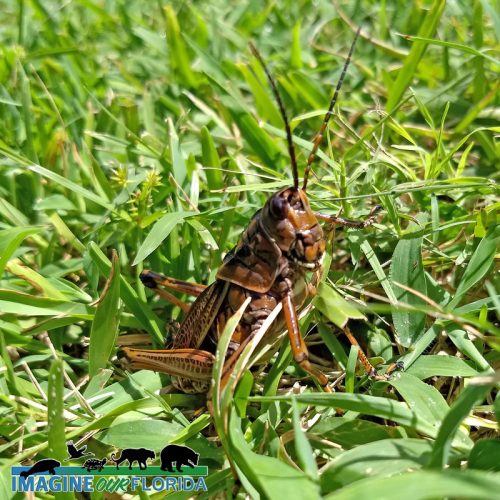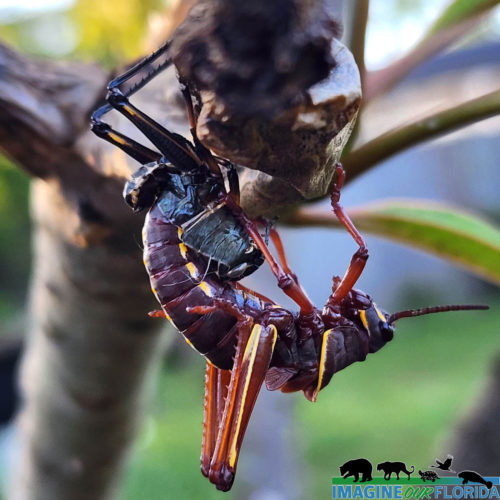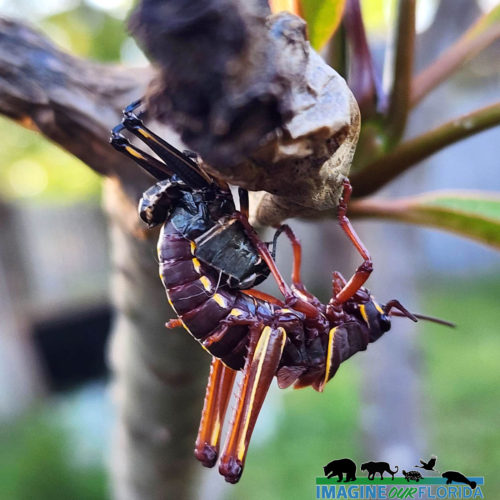The Eastern Grasshopper Lubber (Romalea guttata) is very distinctive in its coloration. They are yellow with black along the antenna, body, and abdomen. Their forewings, which are rose or pink in color, extend along the abdomen. The hind wings, which are rose in color, are short. They can grow as large as 3 inches and can be seen walking very slowly and clumsily along the ground. Lubbers cannot fly or jump, but they are very good at climbing.
The Grasshopper Lubber can be found in wet, damp environments but will lay its eggs in dry soil. The eggs are laid in the fall and begin hatching in the spring. The female will dig a hole with her abdomen and deposit 30-50 yellowish-brown eggs. They are laid neatly in rows called pods. She will produce 3-5 egg clusters and closes the hole with a frothy secretion. Nymphs wiggle through the froth and begin to eat. The male will guard the female during this time.
Nymphs have a completely different appearance from adults. They are black with yellow, orange, or red strips. They will have 5-6 molts to develop their coloration, wings, and antennae. The coloration of adults will vary throughout their lives as well, and they are often mistaken for different species. There is no diapause in the egg development, and they take just 200 days to develop depending on temperature. A month after the Grasshopper becomes an adult, they begin to lay their eggs.
Both females and males make noise by rubbing their front and hind wings together. When alarmed, they will secrete and spray a foul-smelling froth. This chemical discharge repels predators and is manufactured from their diet. The Grasshopper’s diet is so varied that it is difficult for predators to adapt to the toxin produced. Their bright color pattern is also a warning to predators that they are not good to eat. Birds and lizards avoid them, but parasites will infect nymphs from the tachinid fly. Loggerhead Shrikes will capture the Grasshopper and impale it on thorns or barbed wire. After 2 days, the toxins in the lubber’s body will deteriorate enough for the prey to be consumed.
Lubbers are long-lived, and both the adults and the nymphs can be found year-round in Florida. This Grasshopper occurs in such large numbers in Florida that it can cause damage to your landscape’s plants. Lubbers will bore holes throughout a plant regardless if they are vegetables, citrus, or ornamentals. If their numbers are large enough, they can decimate a plant.
Did you know:
Lubber is an old English word. It means a big, clumsy, stupid person, also known as a lout or lummox. In modern times, it is normally used only by seafarers, “landlubbers.”
Photo credit: Dan Kon



